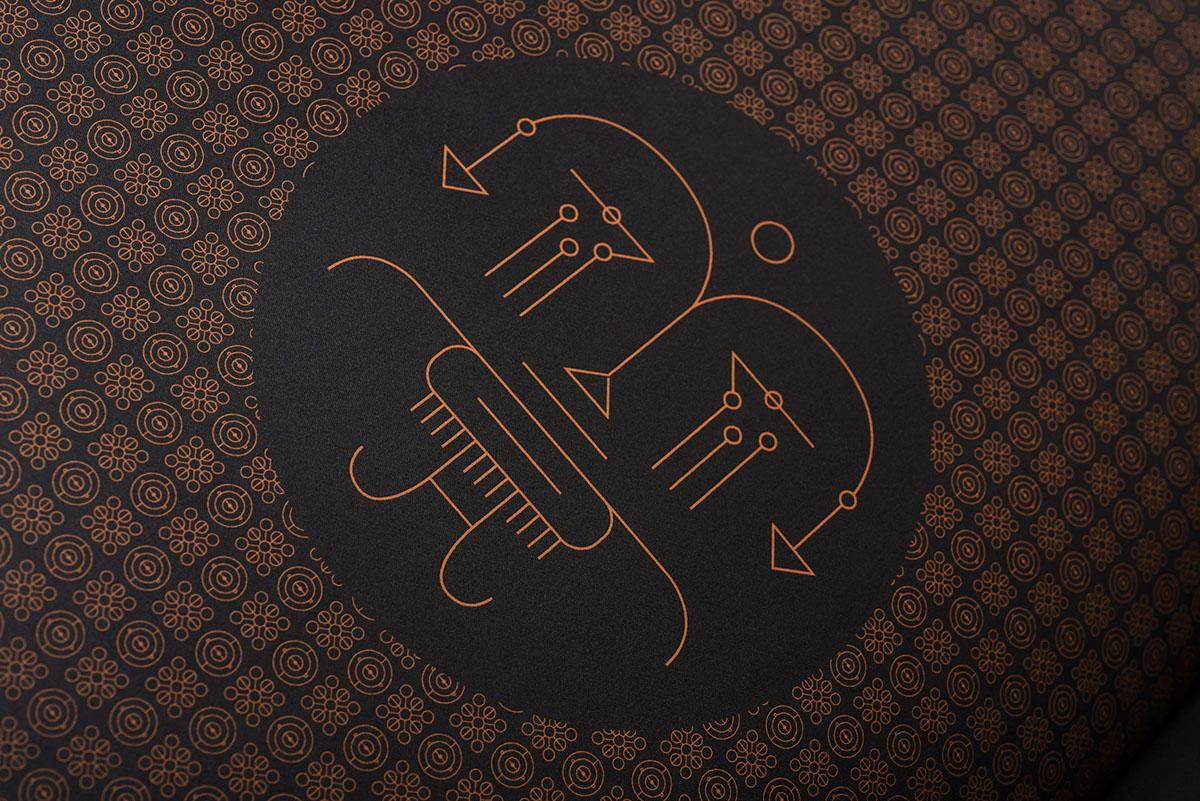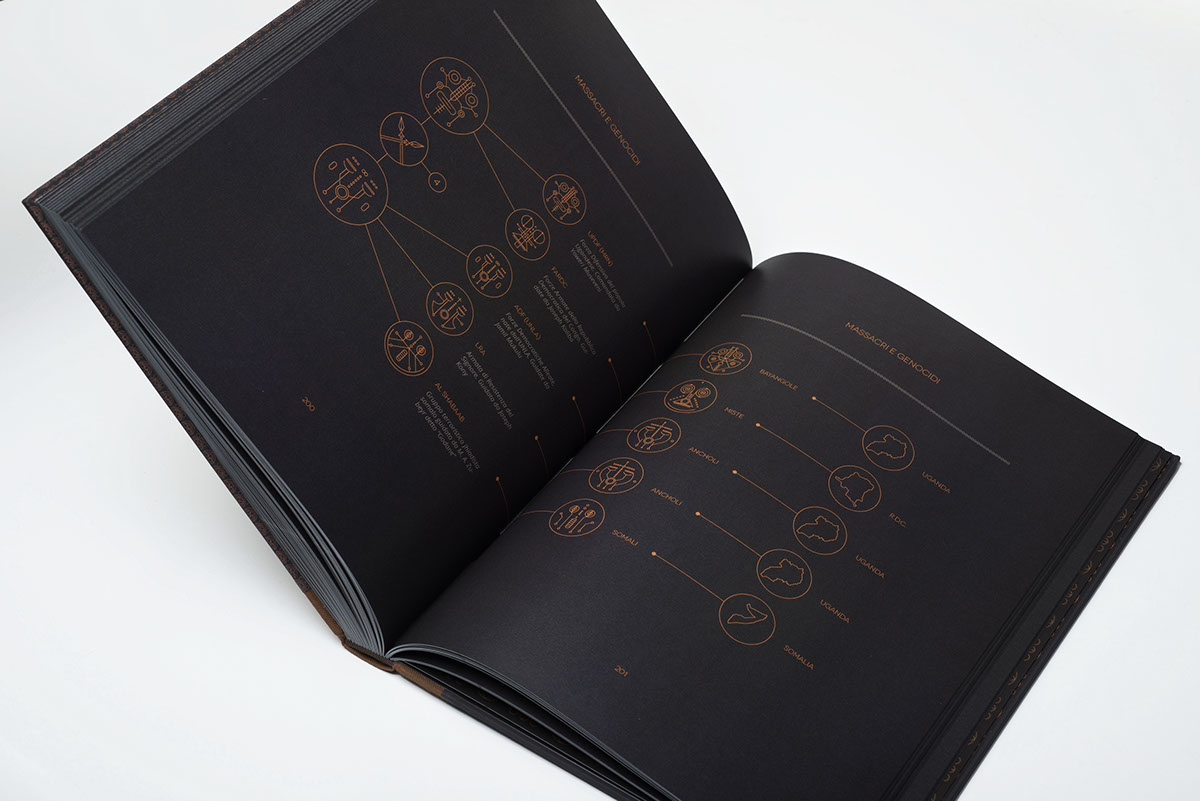This project is an output of editorial design aimed at illustrating the history and situation of Batwa tribes in the region of the Great Lakes in Africa. Its making has been carried out thanks to the creation of a system of signs and illustrations in order to achieve a synthesis for a new visual and cultural identity.
The content has been derived from a report by Jerome Lewis, a famous anthropologist specialized in Batwa culture (Lewis J. - “Les Pygmées Batwa de la région des Grands Lacs” in “MRG Publications” a. XXI n.40, 2000). Batwa are a Pygmy ethnic minority of nomadic hunters and gatherers that counts about 100.000 people on an area of about 100.000 square km around the Kivu Lake and the eastern part of Central Africa. They live in the forest and their social organization is very ancient and strictly linked to their environment. Due to the creation of National parks, Batwa tribes had to leave the forests, their habitat, their lifestyle and their supporting activities, thus losing their social and cultural identity. My main purpose is to recover, promote and tell the Batwa identity through the creation of a concept and graphic system.
The concept of this project has required the definition of a system of symbols suitable to interpret and express the basic elements of the ancient Batwa culture.
The ritual mask has proved to be the best archetype to synthesize in a graphic form all these elements.
It is a fact that the use of masks on ritual occasions belongs to all ancient traditions and carries out various functions, from propitiation to celebration. However, the most important and meaningful function is communication with ancestors and gods: wearing the mask means losing one’s own identity to take on the one of the object in order to get in touch with the inner world and with the ancestors. In Africa, the ritual masks are one of the most popular forms of art and best represent the spiritual world of African tribes. This is why I have decided to use the ritual mask as a symbol to interpret the Batwa culture and recover the ancient roots that embody their identity.
I have translated the concept into a versatile sign system aimed to express graphically the Batwa culture.
I have therefore extrapolated a series of recurring basic elements from the main African ritual masks and I have synthesized these forms to create a basic graphic system suitable for different applications (decorative patterns, mask system and illustration).
The following step has been the creation of a ritual mask system organizing the extrapolated basic elements according to a pre-planned frame.
In spite of the versatility of the mask system, it was not sufficient to represent all the descriptive elements of the content; It has been necessary to enhance the system with new icons and symbols not directly linked with the masks but still keeping the nature of the sign. Once the graphic system has been completed, it has been possible to organize the whole of the graphic elements into infographics.
Furthermore a number of illustrations has been created using the masks as basic units, then overlapping and combining them according to established rules. Some of these illustrations have been handled with UV letterpress.
All the graphic and textual elements have been organized according to a pre-planned layout grid. The format is 24x32cm.
Three main fonts have been used: Opensans for text and captions, Novecento Wide Book for section titles and a new font, called Double Novecento, created for head titles. The book has been printed in offset quality with a HP Indigo and finally hand bound in a bookbinder’s workshop.
Thanks to:
prof. Francesco Guida
Davide Santelia (Printer)
Giulia Poli (Bookbinder)
Cristina Balbiano D’Aramengo (Bookbinder)
Tomaso Carbone (Photographer)




























